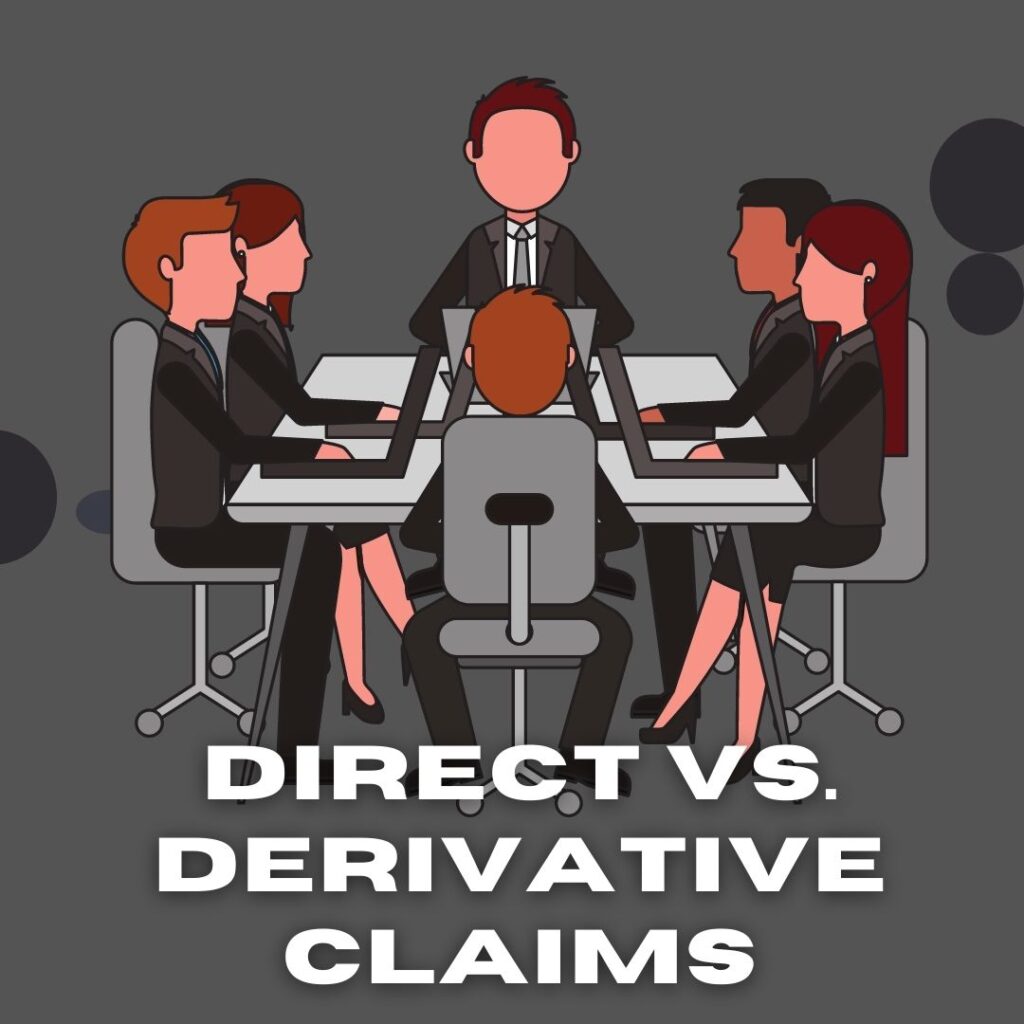If you business relationship has found its way to litigation or is on its way to litigation, you have likely heard the term “derivative” claims. But what is a “derivative” claim? What is the difference between a “derivative” claim and a direct claim? Hopefully this post provides some insights to help distinguish the two types of claims for you.
A derivative claim is a creation of equity in which the individual, in effect, steps into the entity’s shoes and seeks restitution on the entity’s behalf. Derivative suits allow the individual owner to bring suit against wrongdoers on behalf of the entity (corporation or LLC), and force liable parties to compensate the entity for injuries so caused. As a general rule, the individual may not assert a cause of action that belongs to the entity unless and until the entity fails to take action on its own behalf. Derivative actions provide concerned individuals a check against abuses committed by those in control of the entity. Commonly, derivative suits allege improper actions by those in charge of the entity including, self-dealing by those in charge, entity mismanagement, or breaches of the duties of loyalty and care owed to the entity and the entity’s owners.
Direct claims are those seeking redress to the individual directly. Examples of direct claims include the individual being unable to vote on a particular entity action or the denial of an individual’s right to inspect the entity’s books and records or when only one individual has been singled out to not receive a dividend from the entity. Simply, a direct claim seeks redress for harm to that particular individual and not as a consequence of damage to the entity that the individual holds an ownership interest in.
The central inquiry in determining whether a claim is direct or derivative is whether the complained-of injury was an injury to the individual directly, or to the entity. In analyzing whether a claim is direct or derivative, Minnesota courts look not to the theory in which the claim is couched, but instead to the injury itself. Where the injury is to the entity, and only indirectly harms the individual, the claim must be pursued as a derivative claim.

The material contained herein is provided for informational purposes only and is not legal advice, nor is it a substitute for obtaining legal advice from an attorney. Each situation is unique, and you should not act or rely on any information contained herein without seeking the advice of an experienced attorney. All information contained in links are the property of the linked site.

